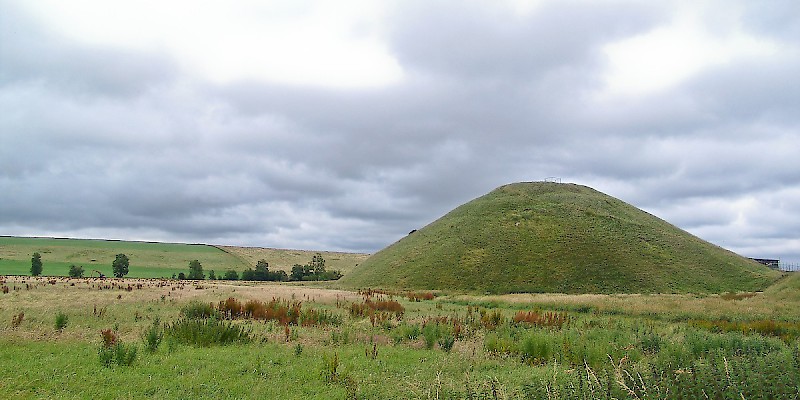Silbury Hill ★☆☆

The tallest prehistoric mound in Europe
At 39.3 meters (129 feet) high, this steep green hill near Avebury is the largest man-made prehistoric mound in Europe, the Neolothic and Bronze Age British equivalent of a pyramid (taller than the famous Mayan one at Chichen Itza in the Yucatán, but about one-half to one-third the height of the major Egyptian pyramids).
I know it doesn't look like much to the modern eye, just a grassier version of the massive piles of earth that appear next to housing developments and major highway interchange projects. But 4,300 years ago, the construction of Silbury Hill was an amazing feat, one that took generations to accomplish.
The latest scholarly thought is that it was actually constructed in 15 phases (with around 100 smaller remodels) between 2400 BC and 2300 BC, by piling up layers of gravel, chalk, stone, wood, and picks made of antler.
The mound of 160 meters (535 feet) wide, and there is a flat platform on top, presumably for ceremonies—but that's just conjecture, and at any rate you cannot go up there to check it out. You can merely admire the grassy mound from a viewing area.
Excavations by treasure seekers (figuring—wrongly—it was a tomb) and archaeologists in the 18C, 19C, and 20C left the hill riddled with tunnels, and, in May 2000, part of the hill began to cave in. Work is still going on to fill in and close off the tunnels to preserve the hill, with researchers gleaning what they can of its mysterious origins as they go.








